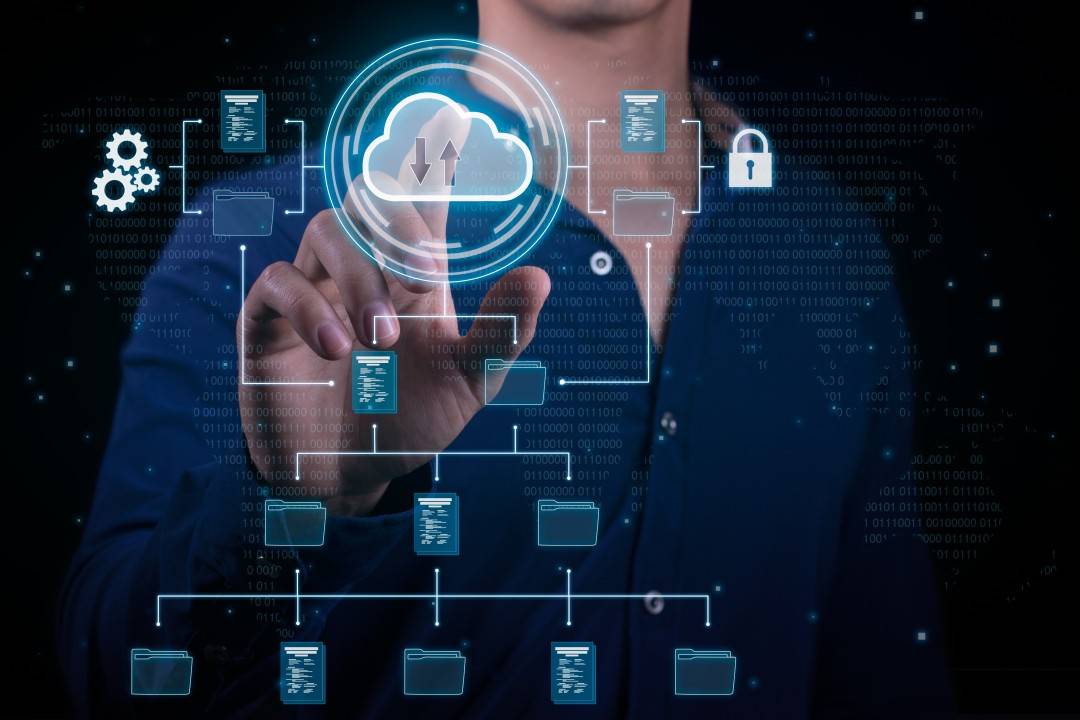CYBERSECURITY SERVICES: PROTECTING YOUR DIGITAL ASSETS
Introduction
In today's increasingly digital world,
cybersecurity services have become indispensable for protecting sensitive
information and ensuring the safety of online operations. From small businesses
to large corporations, the need to secure data and defend against cyber threats
has never been more urgent. Cybersecurity services encompass a wide range of
practices, technologies, and processes designed to safeguard computers, networks,
data, and systems from cyberattacks, data breaches, and other malicious
activities.
These services are designed to provide
protection for businesses and individuals against unauthorized access, theft,
or damage to data. Cybersecurity is essential for maintaining trust,
reputation, and the operational integrity of organizations.
Types of Cybersecurity Services
Network Security
Overview: Network security is the practice of
protecting a computer network from intruders, whether targeted attackers or
opportunistic malware. This service involves securing both the hardware and
software technologies of an organization’s network.
Key Features:
Firewalls: Act as a barrier between a trusted
internal network and untrusted external networks.
Intrusion Detection Systems (IDS) and
Intrusion Prevention Systems (IPS): Monitor network traffic for suspicious
activity and automatically respond to threats.
Virtual Private Networks (VPNs): Encrypt data
transmissions, making it harder for hackers to intercept or tamper with
information.
Benefits: Protects against unauthorized
access and data breaches, ensuring that network traffic is secure and systems
are resilient to attack.
Endpoint Security
Overview: Endpoint security focuses on
protecting end-user devices like laptops, desktops, smartphones, and tablets
from cybersecurity threats. Each of these devices represents a potential entry
point for hackers, so endpoint protection is crucial for securing business
operations.
Key Features:
Anti-malware software: Detects and removes
malicious software such as viruses, worms, and ransomware.
Mobile Device Management (MDM): Enforces
security policies for mobile devices, such as encryption and remote wipe capabilities.
Encryption: Protects data stored on endpoints
by converting it into an unreadable format, accessible only with a decryption
key.
Benefits: Prevents unauthorized access to
sensitive data and ensures that devices are protected from malware and other
malicious activities.
Cloud Security
Overview: Cloud security services focus on
protecting data, applications, and systems hosted in the cloud from cyber
threats. As businesses move more of their operations to the cloud, securing
cloud-based systems becomes essential for maintaining confidentiality and data
integrity.
Key Features:
Encryption: Data is encrypted both in transit
and at rest to prevent unauthorized access.
Identity and Access Management (IAM): Ensures
that only authorized users have access to sensitive data and resources.
Security Audits and Monitoring: Regular
audits and monitoring of cloud infrastructure help detect vulnerabilities and
mitigate risks.
Benefits: Protects cloud-based data and
applications from potential breaches, ensuring compliance with industry
standards and regulations.
Application Security
Overview: Application security services focus
on protecting software applications from security threats, such as code
vulnerabilities, data breaches, and other exploits. These services include the
design, development, and implementation of secure software solutions.
Key Features:
Vulnerability Assessments: Identify
weaknesses in applications that could be exploited by attackers.
Penetration Testing: Simulates cyberattacks
to identify security gaps in applications.
Secure Development Practices: Embeds security
into the software development lifecycle (SDLC) through practices such as secure
coding and regular security reviews.
Benefits: Reduces the risk of software
vulnerabilities that could be exploited by malicious actors, ensuring
applications function securely and reliably.
Identity and Access Management (IAM)
Overview: IAM is a critical cybersecurity
service that ensures only authorized individuals can access certain systems,
applications, and data. This service includes user authentication,
authorization, and role-based access control to manage who has access to what
within an organization.
Key Features:
Multi-Factor Authentication (MFA): Requires
users to provide multiple forms of identification, such as passwords and
biometric data, before accessing systems.
Single Sign-On (SSO): Allows users to log in
once and access multiple applications without needing to re-enter credentials.
Role-Based Access Control (RBAC): Assigns
access permissions based on the user’s role within the organization.
Benefits: Minimizes the risk of unauthorized
access, helps enforce the principle of least privilege, and reduces the impact
of compromised credentials.
Data Loss Prevention (DLP)
Overview: Data loss prevention services focus
on protecting sensitive data from being accidentally or maliciously leaked,
deleted, or stolen. DLP technologies monitor and restrict data transfers to
prevent unauthorized access or breaches.
Key Features:
Content Filtering: Monitors and restricts
data transfers based on predefined policies.
Encryption: Encrypts sensitive data to ensure
it remains secure during transfer.
Real-Time Alerts: Notifies security teams of
suspicious or unauthorized data access attempts.
Benefits: Protects critical business data
from accidental or intentional loss, ensuring compliance with data protection
regulations.
Incident Response and Forensics
Overview: Incident response and forensics
services provide a structured approach to managing and responding to
cybersecurity incidents. In the event of a cyberattack, incident response teams
work quickly to contain, investigate, and remediate the breach, while forensics
helps uncover the root cause and track the attacker’s activities.
Key Features:
Incident Handling: Quickly identifies and
responds to cyber threats to minimize damage.
Forensic Analysis: Analyzes data to determine
how the attack occurred and what was compromised.
Post-Incident Reporting: Provides a detailed
analysis of the incident, including lessons learned and improvements to prevent
future attacks.
Benefits: Minimizes the damage caused by
cyberattacks, provides valuable insights into the attack’s origins, and
enhances preparedness for future threats.
Benefits of Cybersecurity Services
Protection from Cyber Threats
Cybersecurity services provide comprehensive
protection from a wide range of threats, including malware, phishing,
ransomware, data breaches, and insider threats. They use advanced technologies
and techniques to detect, prevent, and mitigate these risks.
Data Integrity and Confidentiality
By implementing robust cybersecurity
measures, organizations can protect the integrity and confidentiality of their
sensitive data. This ensures that information remains accurate, reliable, and
available only to authorized individuals.
Compliance with Industry Regulations
Many industries are subject to regulations
regarding data privacy and security, such as GDPR (General Data Protection
Regulation) for European countries or HIPAA (Health Insurance Portability and
Accountability Act) for healthcare providers in the U.S. Cybersecurity services
help businesses meet these compliance requirements, avoiding costly penalties
and legal issues.
Reduced Risk of Financial Loss
Cyberattacks can lead to significant
financial losses, whether through direct theft, recovery costs, or damage to
reputation. By proactively implementing cybersecurity services, businesses can
reduce the risk of costly incidents.
Business Continuity
A robust cybersecurity strategy ensures that
a business can continue operating even in the face of a cyberattack. This
includes having measures in place for disaster recovery and data backup,
ensuring that critical systems and data are available when needed.
Challenges in Cybersecurity Services
Constantly Evolving Threats
Cybersecurity services must continuously
adapt to the ever-changing landscape of cyber threats. Attackers are constantly
finding new ways to exploit vulnerabilities, making it essential for businesses
to stay updated with the latest security technologies and practices.
Resource Intensive
Implementing and maintaining robust
cybersecurity services can be resource-intensive, requiring skilled personnel,
advanced technologies, and ongoing training to ensure staff are equipped to
handle emerging threats.
User Awareness and Behavior
While cybersecurity services protect systems
from external threats, human error often remains one of the most significant
vulnerabilities. Employees must be educated about best practices, such as
recognizing phishing attempts and using strong passwords, to reduce the risk of
security breaches.
Future Trends in Cybersecurity Services
AI and Machine Learning
Artificial Intelligence (AI) and Machine
Learning (ML) are being increasingly integrated into cybersecurity services to
provide real-time threat detection and response. AI-powered systems can analyze
vast amounts of data to identify patterns and predict potential security
breaches before they happen.
Zero Trust Architecture
The Zero Trust model operates on the
principle that no one, inside or outside the organization, should be trusted by
default. It requires continuous verification of identity and access, ensuring
that users and devices are properly authenticated before gaining access to
resources.
Cloud-Based Security
As businesses continue to adopt cloud
computing, cloud security services are becoming more important. These services
provide protection for cloud environments, including data encryption, access
management, and threat detection, helping organizations secure their cloud
infrastructure.
Automated Security
Automation in cybersecurity is reducing the
need for manual interventions in routine security tasks. Automated systems can
detect and respond to threats faster than humans, improving overall security
and reducing the workload on IT staff.
Conclusion
Cybersecurity services are essential for
protecting organizations and individuals from the growing threats of
cyberattacks and data breaches. By leveraging the right combination of
technologies, practices, and personnel, businesses can secure their networks,
data, and systems against malicious actors. As cyber threats evolve, so too
must the strategies to combat them, ensuring businesses stay one step ahead in protecting
their critical digital assets.


